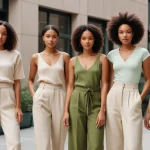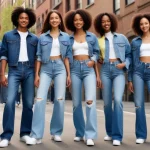Sustainable Fashion: Eco-Friendly Style Choices for Summer 2025
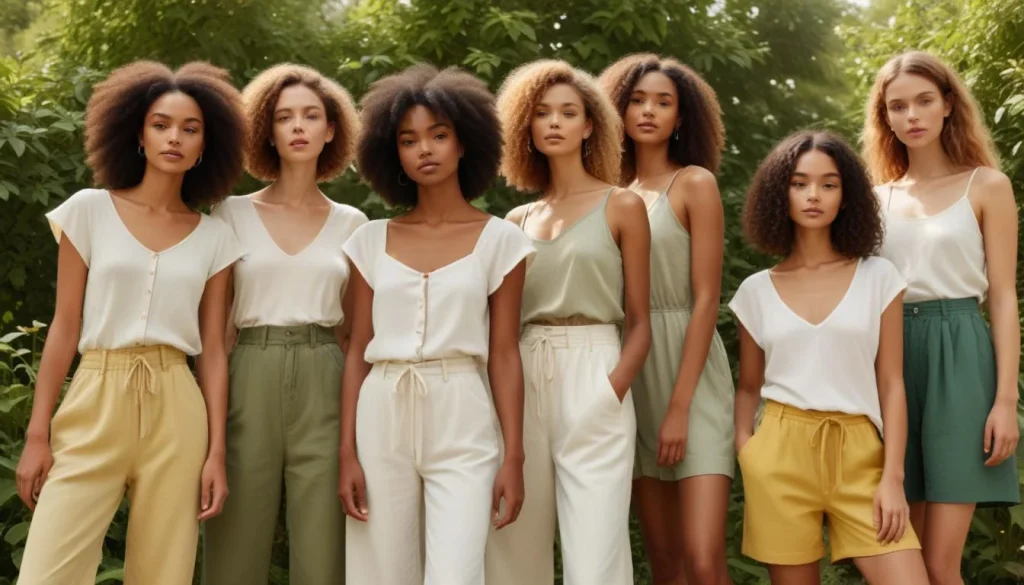
Embracing sustainable summer fashion for 2025 means prioritizing eco-friendly materials, ethical production, and conscious consumption to create a stylish yet environmentally responsible wardrobe.
As we look ahead to warmer days, the intersection of style and environmental responsibility becomes ever more crucial. Sustainable Fashion: Eco-Friendly Style Choices for Summer 2025 isn’t just a trend; it’s a movement towards a more conscious way of dressing, reflecting our values and commitment to the planet. This summer, let’s explore how to curate a wardrobe that is both chic and kind to the Earth.
Embracing Sustainable Fabrics: The Foundation of Eco-Friendly Style
The journey into sustainable fashion begins with the materials we choose. For Summer 2025, the focus is heavily on fabrics that minimize environmental impact while maximizing comfort and durability. Opting for textiles derived from renewable resources or those produced with reduced water and energy consumption is paramount.
Understanding the lifecycle of a garment, from its raw materials to its disposal, helps us make informed decisions. Sustainable fabrics offer breathability and lightness, perfect for the summer heat, without compromising on style or ethical considerations.
Organic cotton, a perennial favorite, continues to be a cornerstone of sustainable summer wardrobes. Its cultivation avoids the use of harmful chemicals, which not only protects farm workers and local ecosystems but also results in a softer, more breathable fabric against your skin. For summer dresses, lightweight shirts, and comfortable shorts, organic cotton provides an excellent, eco-conscious choice.
Linen and Hemp: Nature’s Performance Fabrics
Linen, derived from the flax plant, and hemp are celebrated for their minimal environmental footprint. Both require significantly less water and fewer pesticides than conventional cotton. They are also incredibly strong and become softer with each wash, offering longevity and a beautiful drape. These fabrics are naturally thermoregulating, making them ideal for staying cool in the summer heat. Think breezy linen trousers, elegant hemp blouses, and comfortable resort wear.
Innovative Regenerated Fibers: Tencel and Modal
Beyond traditional natural fibers, innovative regenerated cellulosic fibers like Tencel (lyocell) and Modal are gaining prominence. Produced from sustainably sourced wood pulp using a closed-loop process that recycles water and solvents, these fabrics are incredibly soft, smooth, and highly breathable. They offer a luxurious feel with a significantly reduced environmental impact, making them perfect for elegant summer garments that feel good and do good.
By prioritizing these sustainable fabrics, we lay a strong foundation for an eco-friendly summer wardrobe that doesn’t sacrifice style or comfort. Each choice contributes to a healthier planet and a more responsible fashion industry.
Ethical Production and Transparency: Beyond the Fabric
Choosing sustainable fabrics is only one piece of the puzzle. The ethical treatment of workers and transparent supply chains are equally vital components of truly sustainable fashion. For Summer 2025, consumers are increasingly demanding to know where their clothes come from and under what conditions they were made.
Ethical production ensures fair wages, safe working environments, and reasonable working hours for everyone involved in the garment-making process. This commitment extends from the farmers who grow the raw materials to the artisans who cut and sew the final pieces.
Fair Labor Practices: A Moral Imperative
Supporting brands that uphold fair labor practices is critical. This means looking for certifications like Fair Trade or checking a brand’s transparency reports. These certifications often guarantee that workers receive living wages, are not subjected to child labor, and work in safe, healthy conditions. Your summer purchases can directly contribute to improving livelihoods and empowering communities.
Many brands are now sharing detailed information about their factories and suppliers, allowing consumers to make more informed choices. This level of transparency builds trust and fosters a more equitable fashion industry. It’s about recognizing the human element behind every stitch.
Supply Chain Traceability: Knowing Your Garment’s Journey
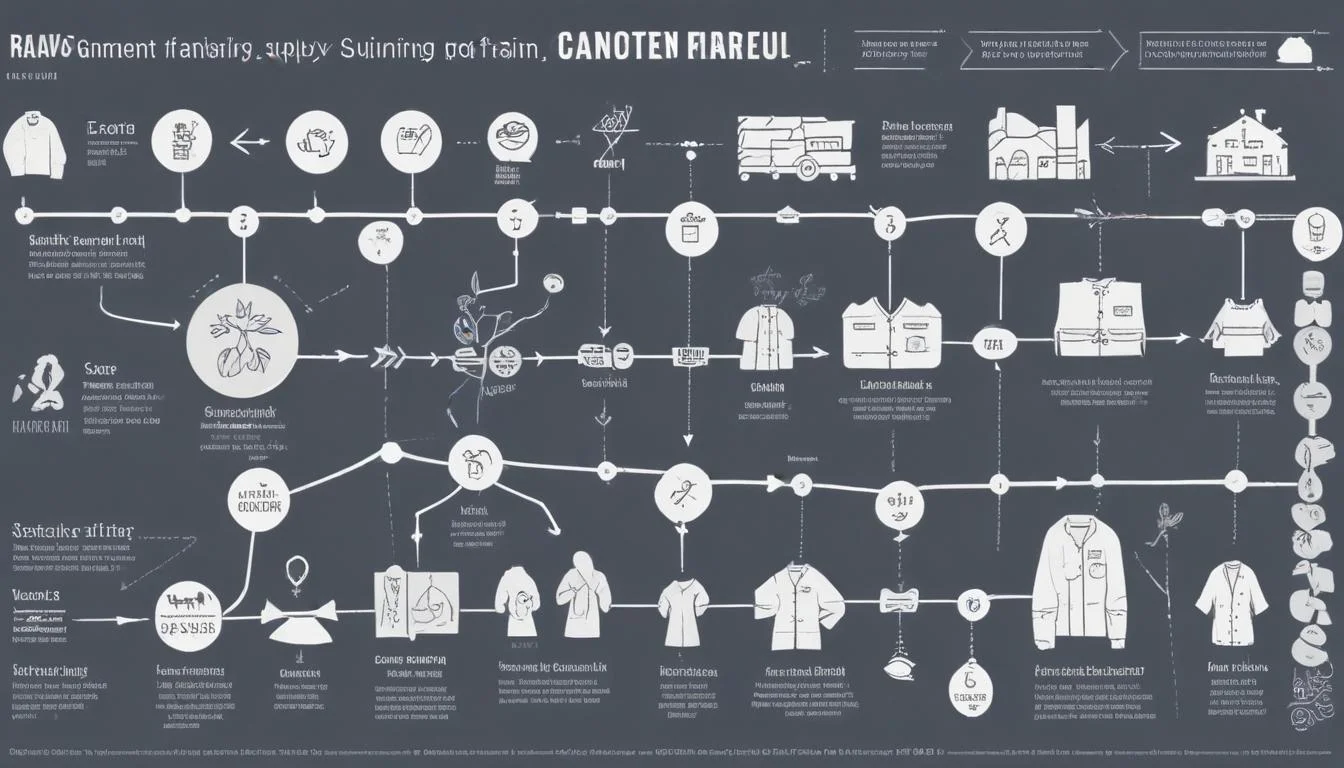
Traceability in the supply chain means being able to track a garment’s journey from its origin to the consumer. This helps identify and address potential ethical and environmental issues at every stage. For Summer 2025, brands are increasingly investing in technologies and partnerships that allow for greater visibility into their production processes.
- Digital Tracking: Blockchain and other digital tools are being used to record every step of a garment’s production.
- Supplier Audits: Regular audits of factories and suppliers ensure compliance with ethical and environmental standards.
- Public Reporting: Brands are publishing comprehensive reports on their supply chains, making information accessible to consumers.
By prioritizing brands that are transparent about their supply chains and committed to ethical production, we can collectively push the industry towards more responsible practices. This ensures that our eco-friendly style choices for Summer 2025 not only look good but also feel good, knowing they were made with integrity.
Timeless Design and Versatility: Reducing Consumption
One of the most impactful ways to practice sustainable fashion is by reducing overall consumption. This doesn’t mean sacrificing style; rather, it encourages a shift towards a more mindful and intentional approach to building a wardrobe. For Summer 2025, the emphasis is on investing in timeless pieces that offer versatility and longevity, transcending fleeting trends.
When we choose well-made garments with classic designs, we extend their lifespan, reducing the need for constant replacements. This approach not only lessens our environmental footprint but also cultivates a more sophisticated and enduring personal style.
Building a Capsule Summer Wardrobe
A capsule wardrobe for summer focuses on a curated selection of interchangeable pieces that can be mixed and matched to create numerous outfits. This strategy minimizes impulse purchases and ensures every item in your closet serves multiple purposes. Think about core pieces like a versatile linen dress, tailored shorts, a classic white organic cotton shirt, and comfortable sandals.
Investing in Quality Over Quantity
While sustainable fashion can sometimes come with a higher upfront cost, it often proves more economical in the long run. High-quality garments made from durable, eco-friendly materials are designed to withstand wear and tear, reducing the frequency of replacements. This shift from fast fashion’s disposable mentality to investing in lasting pieces is a cornerstone of sustainable living.
Consider the cost per wear: a well-made item worn dozens of times offers far greater value and a lower environmental impact than a cheap item worn only a few times before being discarded. For Summer 2025, prioritize craftsmanship and material integrity.
Versatile Pieces for Various Occasions
When selecting your summer attire, think about how each item can transition between different settings. A flowy maxi dress can go from a beach cover-up to an evening dinner with the right accessories. A pair of well-fitting linen trousers can be dressed up for work or down for a casual weekend. This versatility maximizes the utility of each garment, reducing the overall number of items you need.
By focusing on timeless design and versatility, we not only create a more functional and stylish summer wardrobe but also actively participate in reducing the environmental burden of textile waste. This thoughtful approach to consumption is a powerful statement for sustainable living.
Circular Fashion Initiatives: Extending the Life of Garments
Beyond conscious purchasing, participating in circular fashion initiatives is a powerful way to enhance your eco-friendly style for Summer 2025. Circularity aims to keep resources in use for as long as possible, extracting the maximum value from them while in use, then recovering and regenerating products and materials at the end of each service life. This contrasts sharply with the traditional linear ‘take-make-dispose’ model.
These initiatives include repairing, reusing, reselling, and recycling garments, all of which contribute to significantly reducing waste and the demand for new production. Embracing circularity is a proactive step towards a truly sustainable fashion ecosystem.
Repair and Care: Making Clothes Last
One of the simplest yet most effective circular practices is to properly care for and repair your clothes. Learning basic mending skills or seeking out local repair services can significantly extend the life of your favorite summer pieces. A small tear or a loose button doesn’t have to mean the end of a garment’s journey. Proper washing and storage also play a crucial role in longevity.
Resale and Swapping: Giving Clothes a Second Life
The booming resale market offers fantastic opportunities to both find unique summer styles and give your pre-loved garments a new home. Online platforms, consignment stores, and local clothing swaps are excellent avenues for buying and selling second-hand. This not only reduces waste but also makes fashion more accessible and affordable.
- Online Marketplaces: Platforms like ThredUp, Poshmark, and Depop make buying and selling used clothing easy.
- Local Consignment Shops: Support local businesses while refreshing your wardrobe.
- Clothing Swaps: Organize or join community events to exchange garments with friends and neighbors.
By participating in the resale economy, you’re actively diverting textiles from landfills and reducing the environmental impact associated with manufacturing new clothes. It’s a win-win for your wallet and the planet.
Textile Recycling: The Last Resort, Not the First
When garments are truly beyond repair or reuse, textile recycling offers a final option to prevent them from ending up in landfills. Many brands and municipalities now offer textile take-back programs. While not all fabrics can be fully recycled into new garments, this process can at least repurpose materials for insulation, cleaning cloths, or other products.
For Summer 2025, make circularity a core principle of your style choices. By extending the life of garments through care, repair, reuse, and responsible recycling, we move closer to a truly sustainable fashion future.
Conscious Consumerism: Making Informed Choices
The power to drive change in the fashion industry largely rests with consumers. Conscious consumerism involves making purchasing decisions based on ethical, environmental, and social considerations. For Summer 2025, this means being more discerning about where and how we shop, actively seeking out brands that align with our values for a more sustainable future.
It’s about asking questions, doing your research, and supporting businesses that are genuinely committed to sustainability, rather than just greenwashing. Every purchase is a vote for the kind of world we want to live in.
Researching Brands: Beyond the Marketing Hype
Before making a purchase, take the time to research the brand’s sustainability practices. Look for information on their website about their materials, supply chain, labor policies, and environmental initiatives. Be wary of vague claims and prioritize brands that provide concrete data and third-party certifications. Tools like the Good On You app can help assess a brand’s ethical and environmental ratings.
Supporting Small and Local Businesses
Often, small and local businesses have shorter supply chains and more direct control over their production processes, making it easier for them to implement sustainable practices. Supporting these businesses can also foster local economies and promote craftsmanship. For Summer 2025, explore local boutiques, artisan markets, and online shops that champion sustainable practices.
Understanding Certifications and Standards
Navigating the world of sustainable certifications can be complex, but understanding key labels can guide your choices. Look for certifications such as:
- GOTS (Global Organic Textile Standard): Ensures organic status of textiles from harvesting of the raw materials through environmentally and socially responsible manufacturing.
- OEKO-TEX Standard 100: Guarantees textiles are free from harmful substances.
- Fair Trade Certified: Ensures fair wages and safe working conditions for farmers and factory workers.
These certifications provide independent verification of a brand’s claims, offering peace of mind that your summer fashion choices are genuinely eco-friendly. By becoming a more conscious consumer, you become an active agent of change in the fashion industry, shaping a more sustainable future for all.
The Future of Sustainable Summer Fashion: Innovations and Trends
As we look towards Summer 2025 and beyond, the landscape of sustainable fashion is continually evolving, driven by technological innovations and a growing collective awareness. The future promises even more exciting developments in eco-friendly materials, production methods, and consumer engagement. Staying informed about these emerging trends allows us to remain at the forefront of the movement.
These innovations aren’t just about reducing harm; they’re about creating fashion that actively benefits the planet and its people, pushing the boundaries of what’s possible in sustainable design.
Biodegradable and Bio-Based Materials
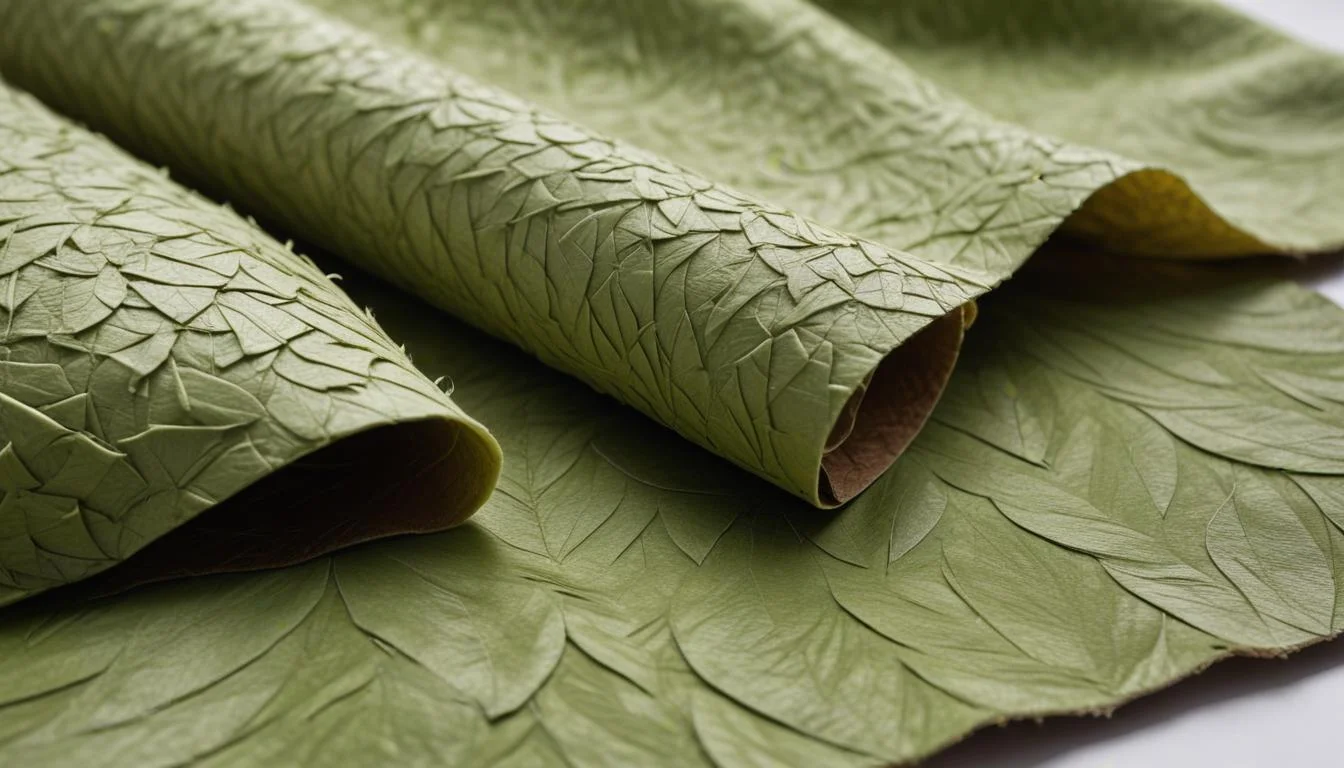
Research into new bio-based and biodegradable materials is accelerating rapidly. We can expect to see more garments made from unexpected sources like pineapple leaves (Piñatex), mushroom mycelium (Mylo), algae, and even agricultural waste. These materials offer alternatives to traditional synthetic fabrics, which often contribute to microplastic pollution, and are designed to safely return to the Earth at the end of their life cycle.
3D Printing and On-Demand Manufacturing
Additive manufacturing, particularly 3D printing, holds immense potential for sustainable fashion. It allows for on-demand production, significantly reducing waste associated with overproduction. Garments can be custom-made, minimizing excess inventory and the environmental cost of unsold goods. This technology could revolutionize how we design, produce, and consume clothing, making fashion more personalized and less wasteful.
Digital Fashion and Virtual Try-Ons
The rise of digital fashion and virtual try-on technologies also contributes to sustainability. By allowing consumers to visualize garments on themselves digitally, returns due to poor fit can be reduced. Furthermore, digital fashion itself offers a completely waste-free way to express style, particularly in the metaverse and gaming platforms, reducing the need for physical production for certain applications.
- Reduced Returns: Virtual try-ons help consumers make better purchasing decisions, minimizing shipping and packaging waste from returns.
- Waste-Free Expression: Digital garments eliminate physical production entirely for virtual environments.
- Design Prototyping: Digital tools allow designers to experiment without producing physical samples, saving resources.
The future of sustainable summer fashion is bright, with continuous innovation paving the way for a more regenerative and responsible industry. By embracing these advancements and continuing to make conscious choices, we can all contribute to a stylish and sustainable Summer 2025 and beyond.
Personalizing Your Sustainable Summer Style
Developing a truly sustainable summer style isn’t just about what you buy; it’s about how you integrate these principles into your personal aesthetic. For Summer 2025, the focus is on creating a wardrobe that reflects your individuality while honoring your commitment to the planet. This involves curating pieces that you genuinely love, that fit well, and that you’ll want to wear for many seasons to come.
Personalization in sustainable fashion allows us to move away from uniform trends and towards an expression of self that is both unique and environmentally conscious. It’s about building a connection with your clothes and understanding their value beyond just their appearance.
Curating a Unique Aesthetic
Instead of chasing every fleeting trend, take the time to identify what truly resonates with your personal style. Sustainable fashion encourages a more thoughtful approach to dressing, where each piece is chosen for its quality, versatility, and alignment with your taste. This leads to a wardrobe that feels authentic and enduring.
Experiment with layering sustainable basics, adding unique accessories, or incorporating vintage finds to create a look that is distinctly yours. Your summer style can be a canvas for expressing your values.
The Power of Accessorizing Sustainably
Accessories can transform an outfit, and they too can be chosen sustainably. Look for accessories made from recycled materials, upcycled components, or natural, responsibly sourced elements like wood, shell, or sustainable metals. Vintage jewelry, scarves, and handbags offer a unique touch and a rich history, preventing new production.
Even small details, like choosing sunglasses made from recycled plastic or a hat woven from natural fibers, contribute to a more sustainable overall look. Accessories are an excellent way to inject personality and eco-consciousness into your summer wardrobe without needing to buy many new garments.
Mindful Consumption and Emotional Connection
Cultivating an emotional connection with your clothes is a powerful aspect of sustainable fashion. When you truly love a garment, you are more likely to care for it, repair it, and keep it for longer. This mindful approach to consumption reduces the desire for constant newness and fosters appreciation for what you already own.
- Storytelling Through Fashion: Choose pieces with a story, whether it’s a vintage find or an item from a brand with a strong ethical mission.
- DIY and Upcycling: Personalize existing garments through embroidery, dyeing, or minor alterations, giving them a fresh look.
- Seasonal Reflection: At the end of each summer, assess your wardrobe, noting what you wore most and what you truly needed, to inform future sustainable choices.
Personalizing your sustainable summer style for 2025 means embracing creativity, mindfulness, and a deep appreciation for your clothing. It’s a journey of self-expression that aligns with a greener, more ethical way of living, proving that style and sustainability are not mutually exclusive but beautifully intertwined.
| Key Aspect | Brief Description |
|---|---|
| Sustainable Fabrics | Prioritize organic cotton, linen, hemp, Tencel, and Modal for reduced environmental impact. |
| Ethical Production | Support brands with fair labor practices and transparent supply chains. |
| Circular Initiatives | Embrace repair, resale, and responsible recycling to extend garment life. |
| Conscious Choices | Research brands, understand certifications, and invest in timeless, versatile pieces. |
Frequently Asked Questions About Sustainable Summer Fashion
For Summer 2025, the best sustainable fabrics include organic cotton, known for its softness and reduced chemical use; linen and hemp, prized for their low water footprint and breathability; and innovative fibers like Tencel and Modal, which offer luxurious comfort and are produced in closed-loop systems.
To identify ethical fashion brands, look for transparency reports on their websites detailing supply chains and labor practices. Certifications like Fair Trade or GOTS (Global Organic Textile Standard) are strong indicators. Research tools like Good On You can also provide ratings on a brand’s ethical and environmental performance.
Circular fashion aims to keep resources in use for as long as possible. For your summer wardrobe, this means repairing clothes when damaged, reselling or swapping items you no longer wear, and choosing brands that offer take-back or recycling programs. It’s about extending the life of each garment to reduce waste.
Sustainable fashion can sometimes have a higher initial cost due to ethical labor practices and quality materials. However, it’s often more durable, leading to a lower ‘cost per wear’ over time. Investing in fewer, higher-quality pieces reduces the need for frequent replacements, making it more economical and sustainable in the long run.
Personalize your sustainable summer style by focusing on timeless pieces that reflect your unique aesthetic rather than fleeting trends. Incorporate vintage finds, upcycled accessories, and ethically sourced jewelry. Care for your clothes diligently and consider DIY alterations to give them a fresh, individual touch, fostering a deeper connection with your wardrobe.
Conclusion
Sustainable Fashion: Eco-Friendly Style Choices for Summer 2025 is more than just a passing trend; it represents a fundamental shift in how we approach our wardrobes and our impact on the planet. By consciously choosing sustainable fabrics, supporting ethical production, embracing circularity, and becoming more informed consumers, we can cultivate a summer style that is both chic and responsible. This journey towards mindful dressing allows us to express our individuality while contributing to a healthier, more equitable future for the fashion industry and the world at large. Let’s make every style choice count this summer.
